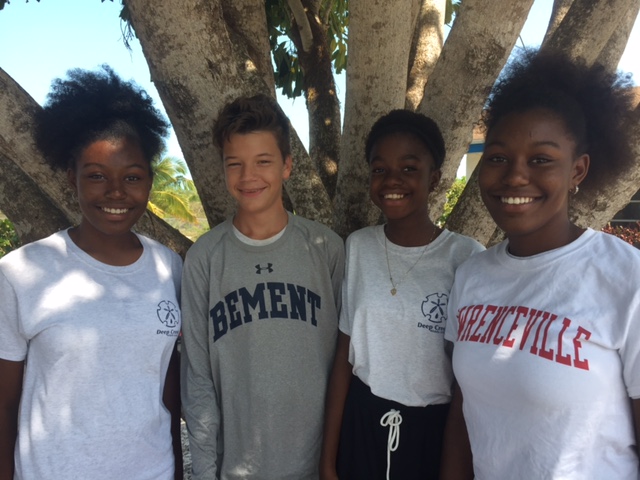This past week saw Dr. Owen O’Shea of the CEI Shark Research and Conservation Program travel to Bimini to begin discussions about a new and very exciting collaboration with the world famous Bimini Biological Field Station (BBFS) or Shark Lab. Director of the BBFS, Dr. Tristan Guttridge, hosted Owen for four days as they prepared samples for joint Masters of Science student, Tanja Schwanck, currently conducting her fieldwork at CEI. Her project aims to describe gene flow in southern stingrays, working on the principle that female stingrays form and stay within sex-biased sub-populations, while transient males move among these different sites, acting as conduits for gene flow and connectivity.
Dr Tristan Guttridge, Michael Scholl and Owen at Shark Lab
This is one of the first studies of its kind in The Bahamas, and may offer a glimpse into how these fragmented populations, with seemingly little immigration or emigration, can remain genetically viable. The project is also expected to highlight the important role of not just male southern stingrays, but of the dispersal corridors within these groups of small islands. During his visit, Owen was able to join Shark Lab volunteers on ray hunting expeditions, where he was able to assess how their methodologies differ from his own. He also offered a workshop on safe handling and sampling protocols for wild stingrays. Owen was also able to take part in fieldwork with Masters of Science student, Vital Heim, involving the assessment of the movement patterns and behavioral ecology of great hammerhead sharks.
Owen working up rays in a captive pen as volunteers and staff look on.
Owen instructing Shark Lab volunteers and staff on safe handling practices on stingrays.
Owen ended his week with a presentation to Shark Lab volunteers, staff scientists and the CEO of the Save our Seas Foundation, Michael Scholl. He discussed the role of stingrays in the environment and why their study is so important addressing conservation issues in The Bahamas.
Owen delivering a talk to Shark Lab volunteers and staff
*All photographs courtesy of Michael Scholl, SOSF
